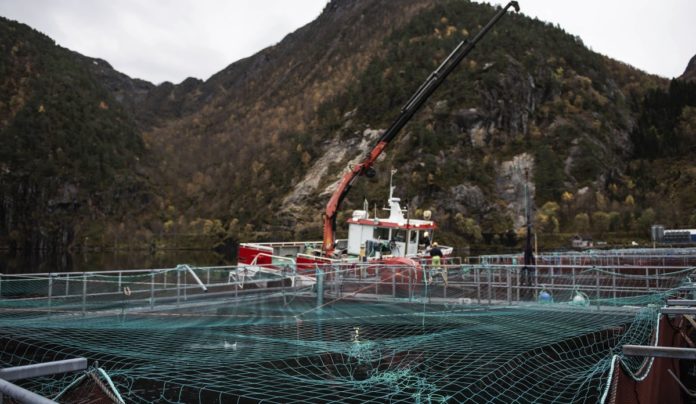For the first time, accurate measurements have been taken of the noise levels that farmed salmon are exposed to.
Over several months, researchers measured underwater noise at 10 different fish farms, revealing that farmed salmon live in a noisy environment.
Researcher Frode Oppedal from the Norwegian Institute of Marine Research explained, “As aquaculture facilities have grown and more work processes involve boats, pumps, and compressors, underwater noise levels have increased.”
The study found significant variations in noise levels depending on the type of facility. Closed facilities recorded the highest noise levels, followed by land-based facilities, with traditional open sea cages being the quietest.
“The traditional sea facilities have less technical equipment than more advanced facilities, so it was not unexpected that there was also the least noise here,” said Oppedal.
The noise levels measured ranged from a background level of 95 dB to a normal level of up to 134 dB, with noisy periods reaching up to 157 dB. In some instances, extremely loud sounds over 175 dB were recorded near hatches or during blasting work.
Oppedal noted that while traditional open cages generally had lower noise levels, there were still significant variations depending on activities such as daily routines or de-licing operations.
The impact of this noise on salmon is not yet fully understood. “We know that salmon can react to loud noise, but the exact thresholds between being startled and experiencing physical harm have not been detailed,” said Oppedal.
The next phase of the research will explore the effects of noise on salmon behavior, habituation, physiology, and brain activity. “We have indications that loud noise can frighten the fish, but further investigation is needed,” Oppedal concluded.


